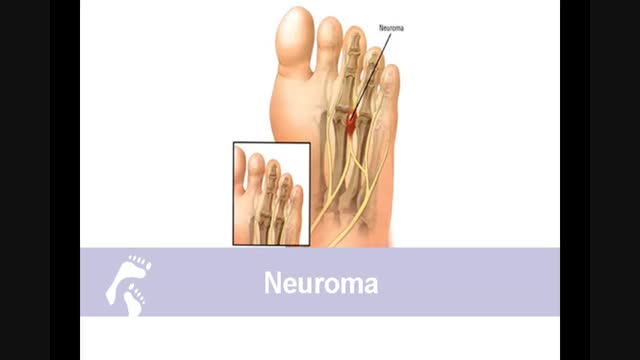
Any tissue that is pinched enough becomes irritated and uncomfortable. When this happens to your nerves, they can misfire and cause additional pain. A neuroma in your foot is like this. With proper treatment, however, you can relieve your distress and restore your lower limbs.
Defining the Problem
A neuroma is a type of benign nerve swelling or growth that develops where nervous tissue becomes pinched and irritated. While it can develop anywhere in the lower limbs, the most common location is between the third and fourth metatarsals in the ball of the foot. This is called a Morton’s neuroma. Pressure from the metatarsal heads compress the nerve and inflame it, causing swelling and thickening.
Understanding the Cause
As the nerve thickens, you typically feel a sharp or burning pain in that area of your forefoot. The tingling and discomfort may radiate out into your toes. You may feel like you’re standing on a small stone or lump, though no bump should be visible. As the damage progresses, you may also develop numbness, especially in your digits.
A neuroma does develop slowly over time as the inflammation and thickening in the nervous tissue compounds. Typically, excessive pressure on the forefoot causes the metatarsal heads to pinch the nerve. This can be the result of a variety of issues—overuse, trauma to the foot, biomechanical problems, and even improper footwear. Repeated impacts on the forefoot strain the structures in the ball of the foot and cause inflammation. High or flat arches, along with some other pre existing biomechanical issues, increase the pressure on the ball of the foot, aggravating the nervous tissue. Tight, narrow shoes squeeze the toes and metatarsals together, potentially pinching nerves.
Diagnosing & Treatment
If left untreated, this condition can cause permanent damage to the nerves, so you do need to seek treatment early for your best chance of recovery. At Country Foot Care, our in-house diagnostic ultrasound can identify a neuroma & measure its size. When needed, an MRI can be ordered to help evaluate the problem.
Treatment begins by decreasing the inflammation and pressure around the thickened nerve. This may involve shoe changes or custom orthotics. Choose footwear that supports your arch type and provides sufficient padding underneath the ball of the foot. Orthotics can help correct any biomechanical conditions that may be worsening the problem. Avoid shoes with too-flat soles, high heels, or narrow, pointed toe boxes, since they irritate the condition. Icing the forefoot can help decrease the inflammation as well. We may also recommend anti-inflammatory medications, cortisone or sclerosing alcohol injections or non-invasive shockwave treatments.
If your foot isn’t responding to these non-surgical measures, there are procedures to relieve the pressure on the nerve. Decompression surgery releases the soft tissues around the neuroma to reduce the strain there. When needed, the neuroma may also be surgically removed.
The best treatment will be prescribed based on your lifestyle and the unique needs of your feet but the key to recovery is to seek experienced care before the problem becomes chronic—or even permanent. To learn more and get properly diagnosed, we recommend you make an appointment as soon as possible. Country Foot Care offers two options for making appointments; online through our MAKE AN APPOINTMENT form via the button at the top of this page or by phone at either of our locations during regular office hours.

